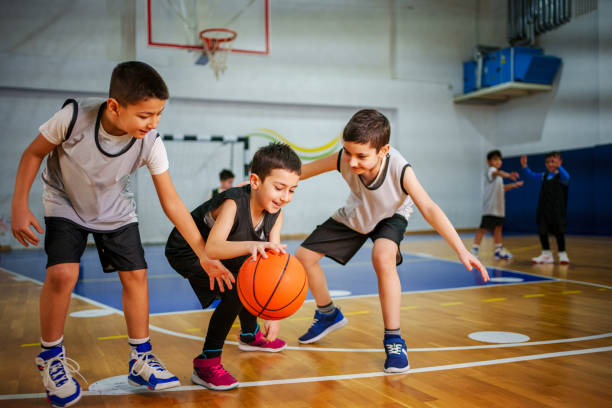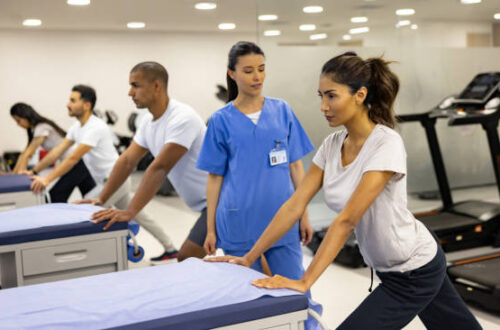Let’s be honest: being a student is tough. You’re juggling classes, late-night study sessions, social life, and the constant pressure of exams. All-nighters, caffeine-fueled cramming, and endless to-do lists can really drain you. You might feel both mentally tired and physically worn out. While it might seem like a luxury you don’t have time for, taking a break for exercise is one of the most powerful tools you have. It’s not only about gaining muscle or shedding pounds. It’s also a fast way to clear your mind, increase your energy, and improve your focus. Your student fitness center is more than just a gym; it’s a hub for wellness that can be your secret weapon for academic success.
In this guide, we’ll explore how exercise benefits your brain. Plus, we’ll share the top 10 workouts from student fitness centers that can boost your mental energy. We’ll show you exactly how to do them, why they work, and how to fit them into your busy student schedule.
The Science Behind the Sweat: Why Exercise is a Superpower for Your Brain
Contents
- 1 The Science Behind the Sweat: Why Exercise is a Superpower for Your Brain
- 2 The Workouts: Your Top 10 Guide to Unlocking Mental Power
- 3 Planning Your Fitness Routine for Maximum Academic Success
- 4 The Holistic Approach: Fueling Your Body and Mind for Academic Success
- 5 Your Student Fitness Center: A Hub for Wellness and Community
- 6 Frequently Asked Questions (FAQs)
Before we get to the workouts, let’s talk about why exercise is so effective. It’s not just a feeling; there’s a lot of science behind the sweat.
The Brain-Boosting Chemicals: Endorphins and Dopamine
When you exercise, your body releases a cocktail of powerful chemicals. One of the most famous is endorphins. These are natural mood lifters and pain relievers that create a feeling of euphoria, often called a “runner’s high.” A quick workout can seriously improve your mood and leave you feeling more positive and energized.
Exercise also boosts dopamine, a neurotransmitter that plays a key role in motivation, pleasure, and focus. This is why you feel a renewed sense of purpose and concentration after a workout—your brain is literally primed and ready for action.
Improved Blood Flow and Oxygenation
When you work out, your heart pumps faster, increasing blood flow throughout your body, including to your brain. This delivers more oxygen and essential nutrients to your brain cells. Think of it like a fresh cup of coffee for your brain. It helps you function better. This leads to improved memory, better problem-solving, and sharper attention to detail.
A Natural Stress Reliever
The pressures of student life can be overwhelming. Exercise is a fantastic way to combat this. It gives you a healthy outlet to release pent-up frustration and anxiety. Exercising can help you forget about a stressful exam or tough assignment. It lets you return to your work with a fresh perspective and a calmer mind. The campus gym workouts are a perfect way to de-stress.
The Workouts: Your Top 10 Guide to Unlocking Mental Power
Now that you know the science, let’s get to the practical part. Here are 10 of the most effective student fitness center workouts you can do to boost your energy and focus.
1. High-Intensity Interval Training (HIIT)
HIIT is a workout style that involves short bursts of intense exercise followed by brief rest periods. It’s perfect for students because it’s quick—you can get a powerful workout in as little as 15 minutes.
- How it boosts energy & focus: HIIT is great at increasing mitochondria in your cells. These are the “powerhouses” that produce energy. This leads to a sustained energy boost that lasts long after your workout is over.
- How to do it: Grab a jump rope or hop on a stationary bike. Sprint for 30 seconds at maximum effort, then rest for 60 seconds. Repeat this cycle for 10-15 minutes.
2. Strength Training with Compound Lifts
Don’t be intimidated by the weight room! Strength training, especially with compound lifts, is a game-changer for your body and your brain.
- How it boosts energy and focus: Compound lifts, such as squats and deadlifts, engage multiple muscle groups. This action releases a surge of feel-good hormones. Keeping good form takes focus, which is a great way to boost your concentration. This can help you in your next study session.
- How to do it: Use barbells, dumbbells, or kettlebells for squats, deadlifts, and overhead presses. Start with a light weight and focus on form. Aim for 3 sets of 8-10 repetitions.
3. Brisk Walking or Jogging
This one might seem too simple, but don’t underestimate the power of a good walk or jog. It’s a low-impact way to get your blood flowing and clear your mind.
- How it boosts energy & focus: A brisk walk increases blood flow to the brain, delivering oxygen that can wake you up and sharpen your thinking. Taking a walk also gives you a mental break from your screen, allowing you to return to your work with renewed clarity.
- How to do it: Use the treadmill for a 20-30 minute session. Try a slight incline to increase the intensity and the benefits.
4. Yoga and Stretching
Yoga is a mind-body exercise that combines physical postures with breathing and meditation. It’s an excellent way to reduce stress and improve mental clarity.
- How it boosts energy & focus: Yoga calms the nervous system and reduces cortisol, the stress hormone. Poses like Sun Salutations are designed to invigorate the body and increase blood circulation. The focus on your breath can quiet your mind and prepare you for deep concentration.
- How to do it: Find a quiet corner or a studio space in your fitness center. You can follow a routine on your phone or simply perform a few simple poses like Downward Dog, Warrior Pose, and Cat-Cow to get started.
5. Cycling
Whether you’re in a spin class or on a stationary bike, cycling is a phenomenal cardio workout that gets your heart pumping.
- How it boosts energy & focus: Cycling is a low-impact way to get a high-quality cardio workout. The repetitive motion can be meditative, allowing you to zone out and come back to your work with a clear mind. The increased oxygen flow to your brain also leaves you feeling more alert and focused.
- How to do it: Spend 20-30 minutes on a stationary bike, varying your resistance and speed to keep the workout engaging.
6. Elliptical Trainer
The elliptical is a great all-in-one machine that combines cardio with a full-body workout.
- How it boosts energy & focus: The elliptical works your arms and legs at the same time. This gives you a better workout in less time. This can lead to a more effective energy boost, making it a great option when you’re short on time.
- How to do it: Set the resistance to a moderate level and try to maintain a steady, smooth pace for 20-30 minutes.
7. Jump Rope Intervals 🤸♀️
This isn’t just for boxers—a jump rope is one of the most effective tools for a quick cardio blast.
- How it boosts energy & focus: Jumping rope is a high-intensity workout that improves coordination and stamina. It’s a great way to quickly elevate your heart rate and feel a surge of energy. The rhythm of the jumping can also be a form of active meditation that clears your mind.
- How to do it: Jump for 60 seconds, then rest for 30 seconds. Repeat for 5-10 minutes.
8. Bodyweight Circuits
No equipment? No problem. Bodyweight exercises can be done in any open space in the gym.
- How it boosts energy and focus: Bodyweight exercises like squats, push-ups, lunges, and planks give you a solid full-body workout. This routine enhances both strength and endurance. The lack of equipment makes this a convenient and quick option for a mental reset.
- How to do it: Perform each exercise for 45 seconds, with a 15-second rest in between. Complete 3 rounds.
9. Battle Ropes
Battle ropes are a fun, challenging, and highly effective way to get a cardio and strength workout.
- How it boosts energy & focus: The quick, rhythmic movements help release tension. They get your blood flowing and can greatly improve your focus afterward. It’s a workout that forces you to be in the moment and can be a powerful mental release.
- How to do it: Perform waves with the ropes for 30 seconds, then rest for 30 seconds. Repeat for 5-7 minutes.
10. Rowing Machine
The rowing machine is often overlooked, but it’s one of the best full-body workouts you can do.
- How it boosts energy & focus: Rowing engages your legs, core, and upper body all at once. It’s a fantastic way to improve cardiovascular health and can be a great way to clear your mind and work out any mental blocks you’re facing.
- How to do it: Start with a moderate pace and focus on maintaining good form. Aim for 10-15 minutes to start.
Planning Your Fitness Routine for Maximum Academic Success
Getting to the gym is half the battle. Here are some tips to make sure your workouts are working for you and not against you.
Finding the Right Time to Work Out
- Morning Workout: If you’re a morning person, a workout before class can be a great way to start your day with a clear, focused mind.
- Afternoon Reset: A late afternoon workout can break up your day. It helps re-energize you and gives you a fresh start for your evening study.
- Evening Stress Relief: A workout in the evening can be a great way to de-stress and prepare your mind and body for a good night’s sleep.
Combining Workouts for a Well-Rounded Plan
You don’t have to stick to just one workout. Try combining them to keep things interesting. For example:
- Cardio & Strength Day: 15 minutes of HIIT on the bike, followed by 20 minutes of strength training with dumbbells.
- Mind & Body Day: A brisk 20-minute walk on the treadmill, followed by a 15-minute yoga session.
Listen to Your Body and Avoid Burnout
While consistency is key, so is rest. Don’t be afraid to take a rest day or have a light workout if you’re feeling exhausted. Pushing yourself too hard can lead to injury and burnout, which will hurt your academic performance more than it will help.
The Holistic Approach: Fueling Your Body and Mind for Academic Success
Exercise is a huge piece of the wellness puzzle, but it’s not the only one. For the best results, you need to combine your physical activity with smart choices in other areas of your life. This holistic approach is what truly gives you the energy and focus you need to excel in college.
The Power of Proper Nutrition
You can’t run a high-performance engine on empty. Your body needs the right fuel to function at its best, and that’s especially true for your brain. Eating nutritious food is crucial for sustained energy and cognitive function.
- Pre-Workout Fuel: A quick snack with carbohydrates can give you the energy you need to get through your workout. A banana, a handful of almonds, or a granola bar are all great choices.
- Post-Workout Recovery: After you work out, eat a meal or snack with protein and carbs. This helps your muscles recover and refills your energy. Think of Greek yogurt with berries or a turkey sandwich.
- The Dangers of Skipping Meals: When you’re busy, it’s easy to skip meals. This can lead to low energy, difficulty concentrating, and mood swings. A consistent eating schedule, even if it’s just small meals and snacks throughout the day, is vital for maintaining focus.
Hydration is Non-Negotiable
It’s a simple fact: if you’re dehydrated, your energy levels and cognitive function will suffer. Even mild dehydration can lead to fatigue, headaches, and a lack of concentration.
- How much water do you need? A good rule of thumb is to carry a reusable water bottle with you throughout the day and make sure you’re drinking consistently. On workout days, aim to drink even more to replace the fluids you lose through sweat.
- The impact on focus: When you’re well-hydrated, your brain performs better. It helps maintain blood volume, ensuring a steady flow of oxygen and nutrients to your brain cells.
The Ultimate Recovery Tool: Sleep
Exercise is a great way to burn off steam, but sleep is where your body and brain truly recover. For students, sleep is directly linked to academic performance.
- How sleep helps your brain: While you sleep, your brain works to strengthen memories and sort through the information you learned each day. Getting enough sleep is key. Most adults need 7 to 9 hours each night. This helps boost your memory, learning, and problem-solving skills.
- The positive feedback loop: Regular exercise can improve the quality of your sleep, making it easier to fall asleep and stay asleep. In turn, a good night’s sleep gives you the energy and motivation to work out the next day, creating a powerful cycle of wellness.
Eating well, drinking enough water, and getting good sleep help your body and brain work their best.
Your Student Fitness Center: A Hub for Wellness and Community
Your student fitness center is about more than just equipment. It’s a resource that can help you succeed in college.
Beyond the Workouts: The Hidden Resources of Your Campus Gym
- Group Fitness Classes: Most campus gyms offer a wide range of free classes, from spin and yoga to Zumba and kickboxing. This is a great way to meet new people and stay motivated.
- Personal Trainers: Many fitness centers offer free or low-cost consultations with personal trainers. They can help you create a personalized workout plan and show you how to use the equipment safely.
- Community: The gym is a great place to meet new people outside of your classes. It’s a shared space where everyone is working towards a healthier version of themselves.
Building a Routine that Sticks
- Find a Gym Buddy: Working out with a friend can make you more accountable and make the experience more fun.
- Set a Goal: Your goal doesn’t have to be to lose weight. It could be to go to the gym three times a week or to get 20 minutes of exercise every day.
- Start Small: Don’t try to go from zero to five workouts a week. Start with 1-2 sessions a week and build from there.
Frequently Asked Questions (FAQs)
Q1: Do I need to work out for a long time to see benefits?
A: No! Even a 15-minute workout can give you a significant energy and focus boost. The key is consistency, not duration.
Q2: What should I eat before and after my workout?
A: Before your workout, have a small snack with carbohydrates to give you energy (e.g., a banana or a granola bar). Afterward, eat a meal with protein and carbs to help your muscles recover (e.g., Greek yogurt or a chicken sandwich).
Q3: Is it better to work out in the morning or evening?
A: The best time to work out is whenever you can do it consistently. Both have benefits. Morning workouts can set a positive tone for the day, while evening workouts can help you de-stress from a long day of classes.
Q4: How can I stay motivated to go to the gym?
A: Find a workout you genuinely enjoy. Listen to a great podcast or a fun playlist while you work out. And remember that the hardest part is just showing up. Once you’re there, you’ll feel better.
Q5: What’s the best workout for beginners?
A: A brisk walk, using the elliptical, or a simple bodyweight circuit are all excellent places to start. The most important thing is to choose a workout that feels comfortable and safe for you.
Making your campus fitness center part of your routine helps you in many ways. You’re not just taking care of your body. You’re also boosting your grades, improving your mental health, and paving the way for college success.





